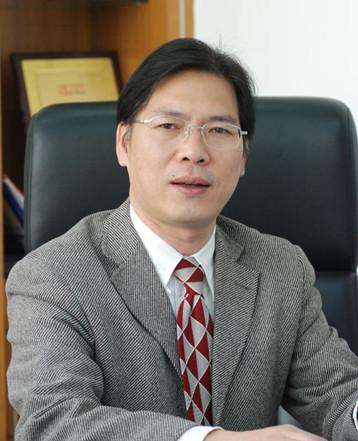
Contact Information:
Haiyang Wang
483 Wushan Road
College of Life Sciences
South China Agricultural University
State Key Laboratory of Protection and Utilization of
Subtropical Agriculture Resource
Guangzhou, China
Email: whyang@scau.edu.cn
Education & Employment Experience
Dr. Haiyang Wang received his Bachlor’s degree in 1986 from Hangzhou University (now Zhejiang University), Master’s degree from Northwest University of China in 1989, and Ph.D degree from the University of Michigan in 1998. From 1998-2002, he was a postdoc fellow in Dr. Xing Wang Deng’s lab at the Department of Molecular, Cellular and Developmental Biology, Yale University. He was an Assistant Scientist (Principal Investigator) at the Boyce Thompson Institute for Plant Research at Cornell University during 2002-2009 and then a Senior Research Fellow and Principal Investigator at the Department of Molecular, Cellular and Developmental Biology, Yale University during 2009-2013, Professor and Chief Scientist of maize functional genomics at the Biotechnology Research Institute, Chinese Academy of Agricultural Sciences during 2013-2016. He joined the South China Agricultural University as a Professor of Biology in August 2016.
Research Interests
Research in the Wang lab is mainly focused on the following two themes. One area of research is to dissect the molecular mechanisms of light regulating plant growth and development, using Arabidopsis thaliana as a model system. Light is a major environmental factor that regulates essentially every aspect of plant growth and development, ranging from seed germination, seedling de-etiolation, vegetative growth, shade avoidance response, circadian clock, to flowering and seed setting. We are particularly interested in understanding the molecular and cellular processes by which phytochromes, the red and far-red light photoreceptors, transducing the light signal to the nucleus to regulate nuclear gene expression and consequently regulating plant growth and development. The second area of research is to use functional genomics tools to identify the key genes and regulatory networks controlling important agronomic traits (yield, fertility, plant architecture, stress tolerance etc.) in rice and maize, and to elucidate the molecular mechanisms regulating trait formation and yield potentials in these important crops. The ultimate goal of our research is to help develop high-yielding, climate-resilient crops that can be better adapted to the ever-changing environments.

Lab Photo
Representative publications related to light signal transduction (*corresponding author)
Xie Y, Liu Y, Wang H, Ma X, Wang B, Wu G, Wang* H. Phytochrome-Interacting Factors Directly Suppress MIR156 Expression to Enhance Shade Avoidance Syndrome in Arabidopsis.Nature Communications,2017, 8(1): 348.
Liu Y, Xie Y, Wang H, Ma X, Yao W, Wang* H. Light and ethylene coordinately regulate the phosphate starvation response through transcriptional regulation of PHOSPHATE STARVATION RESPONSE1. Plant Cell, 2017, 29(9): 2269-2284.
Wang H, Wang* H. Multifaceted Roles of FHY3 and FAR1 in Light Signaling and Beyond. Trends Plant Sciences,2015, 20(7): 453-461.
Wang H, Wang* H. The miR156/SPL Module, a Regulatory Hub and Versatile Toolbox, Gears up Crops for Enhanced Agronomic Traits. Molecular Plant, 2015, 8(5): 677-688.
Wang H, Wang* H. Phytochrome Signaling: Time to Tighten up the Loose Ends. Molecular Plant, 2015, 8(4): 540-551.
Dai M, Xue Q, Mccray T, Chen F, Margavage K, Lee J, Nezames C, Guo L, Terzaghi W, Wan J, Deng X, Wang* H. The PP6 Phosphatase Regulates ABI5 Phosphorylation and Abscisic Acid Signaling in Arabidopsis. Plant Cell, 2013, 25:517-534.
Dai M, Zhang C, Kania U, Chen F, Xue Q, Mccray T, Li G, Qin G, Wakeley M, Terzaghi W, Wan J, Zhao Y, Xu J, Friml J, Deng X, and Wang* H. A PP6-type phosphatase holoenzyme directly regulates PIN phosphorylation and auxin efflux in Arabidopsis. Plant Cell, 2012, 24: 2497-514.
Li G, Siddiqui H, Teng Y, Lin R, Wan X Y, Li J, Lau O, Ouyang X, Da M, Wan J, Devlin P, Deng X, Wang* H. Coordinated Transcriptional Regulation Underlying the Circadian Clock in Arabidopsis. Nature Cell Biology, 2011, 13, 616-622. (Cited by F1000).
Park H, Ding L, Dai M, Lin R, and Wang* H. Multisite phosphorylation of Arabidopsis HFR1 by casein kinase II and a plausible role in regulating its degradation rate.The Journal of Biological Chemistry, 2008, 283:23264-23273.
Lin R, Ding L, Casola C, Ripoll D, Feschotte C, and Wang*H.Transposase-derived transcription factors regulate light signaling in Arabidopsis. Science, 2007, 318: 1302-1305. (Cited by Nature Highlights, Science STKE, F1000).
Yang J, Lin R, Sullivan J, Hoecker U, Liu B, Xu L, Deng X, Wang* H. Light regulates COP1-mediated degradation of HFR1, a transcription factor essential for light signaling in Arabidopsis. Plant Cell, 2005,17: 804-821. (Cited by F1000).
Wang H, Ma L, Li J, Zhao H, and Deng X. Direct interaction of Arabidopsis cryptochromes with COP1 in light control development. Science, 2001, 294:154-158 (with commentary news on Science, cited by F1000).
Representative publications related to crop functional genomics (*corresponding author)
Yu X, Zhao Z, Zheng X, Zhou J, Kong W, Wang P, Bai W, Zheng H, Zhang H, Li J, Liu J, Wang Q, Zhang L, Liu K, Yu Y, Guo X, Wang J, Lin Q, Wu F, Ren Y, Zhu S, Zhang X, Cheng Z, Lei C, Liu S, Liu X, Tian Y, Jiang L, Ge S, Wu* C, Tao* D, Wang* H, Wan* J. A selfish genetic element confers non-Mendelian inheritance in rice. Science,2018, 360(6393): 1130-1132. (cited by F1000).
Wang* H, Deng W. Development of the “Third-Generation” Hybrid Rice in China. Genomics Proteomics Bioinformatics, 2018, (18): 30432-30437.
Wei H, Zhao Y, Xie Y, Wang* H. Exploiting SPL genes to improve maize plant architecture tailored for high-density planting. Journal of Experimental Botany, 2018, 69(20): 4675-4688.
Wang B, and Wang* H.IPA1: a new “Green Revolution” gene? Molecular Plant, 2017, 10(6): 779-781.
Liu J, Chen J, Zheng X, Wu F, Heng Y, Cheng Z, Zhou K, Lin Q, Zhang X, Guo X, Wang J, Wang*H, Wan* J. GW5 acts in the brassinosteroid signalling pathway to regulate grain width and weight in rice. Nature Plants, 2017(3): 17043.
Liu, Y, Wu H, Chen H, Liu Y, Wu C, Wang H, Wan J. A gene cluster encoding lectin receptor kinases confers broad-spectrum and durable insect resistance in rice. Nature Biotechnology,2015, 3, 33(3): 301-305.
Lin Q, Wu F, Sheng P, Zhang Z, Zhang X, Guo X, Wang J, Cheng Z, Wang J, Wang H, Wan J. The SnRK2-APC/C(TE) regulatory module mediates the antagonistic action of gibberellic acid and abscisic acid pathways. Nature Communications,2015(6): 7981.
Wang Q, Liu Y, He J, Zheng X, Hu J, Liu Y, Dai H, Zhang Y, Wang B, Wu W, Gao H, Zhang Y, Tao X, Deng H, Yuan D, Jiang L, Zhang X, Guo X, Cheng X, Wu C, Wang H, Yuan L, Wan J. STV11 encodes a sulphotransferase and confers durable resistance to rice stripe virus.Nature Communications, 2014, 9(5): 4768.
Zhou F, Lin Q, Zhu L, Ren Y, Zhou K, Shabek N, Wu F, Mao H, Dong W, Gan L, Ma W, Gao H, Chen J, Yang C, Wang D, Tan J, Zhang X, Guo X, Wang J, Jiang L, Liu X, Chen W, Chu J, Yan C, Ueno K, Ito S, Asami T, Cheng Z, Wang J, Lei C, Zhai H, Wu C, Wang* H, Zheng* N, Wan* J. D14-SCFD3-dependent degradation of D53 regulates strigolactone signalling.Nature(Research article) 2013, 504(7480):406-410.
Zhao Z, Zhang Y, Liu X, Zhang X, Liu S, Yu X, Ren Y, Zheng X, Wang C, Zhou K, Bian X, Jiang L, Chen L, Liu S, Guo X, Wang J, Jiang X, Wu, C, Zhai H, Wang H,Wan J. A role for a dioxygenase in auxin metabolism and seed development in rice. Developmental Cell, 2013, 27(1): 113-122.
Lin Q, Wang D, Dong H, Gu S, Cheng Z, Gong J, Qin R, Jiang L, Li G, Wang J, Wu F, Guo X, Zhang X, Lei C, Wang H, Wan J. Rice APC/CTE controls tillering by mediating the degradation of MONOCULM 1. Nature communications, 2012(3):752.


